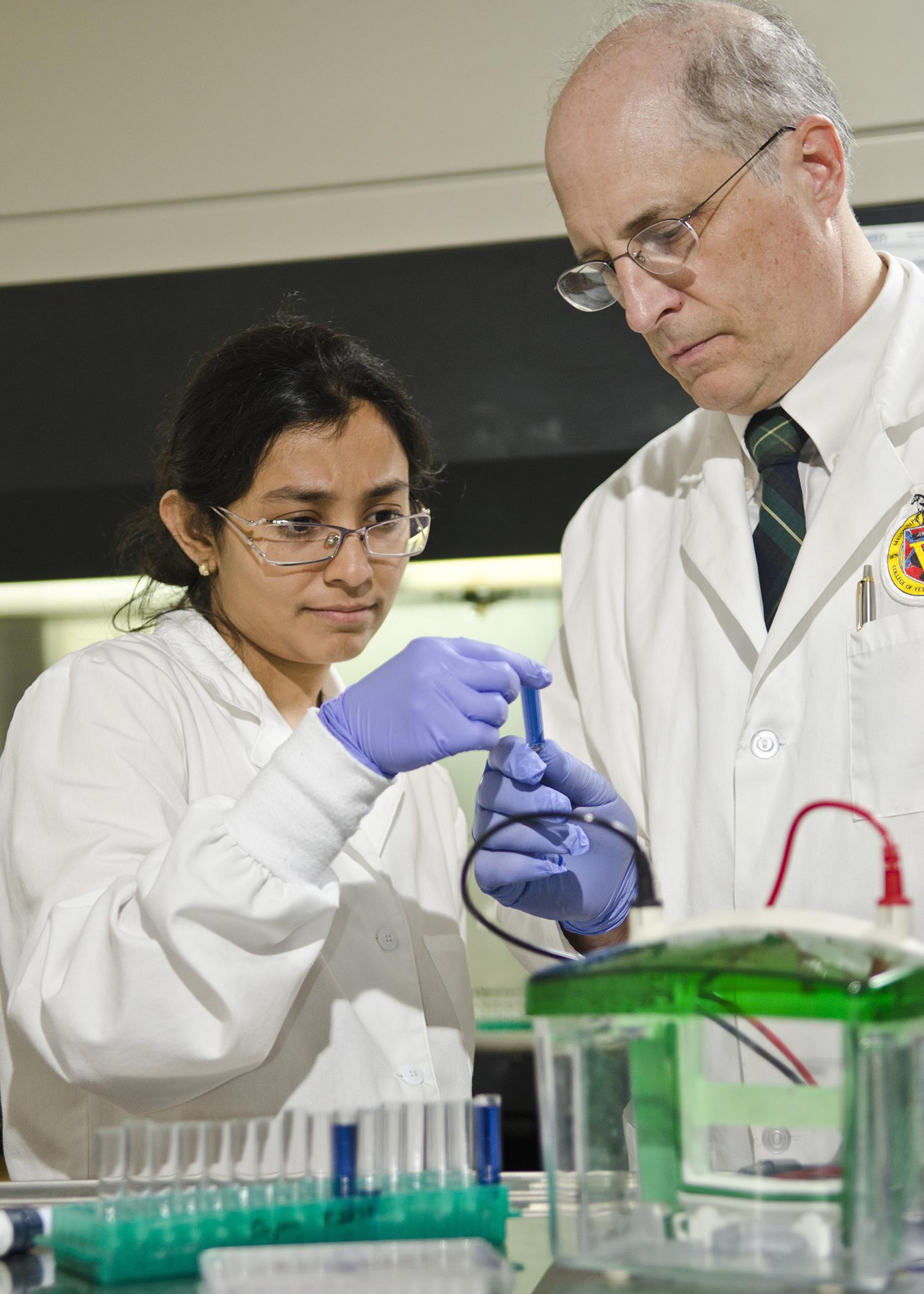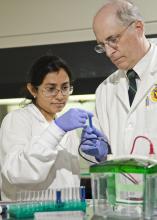Information Possibly Outdated
The information presented on this page was originally released on June 16, 2014. It may not be outdated, but please search our site for more current information. If you plan to quote or reference this information in a publication, please check with the Extension specialist or author before proceeding.
MSU scientists make 'killer' recipes to fight cancer cells
MISSISSIPPI STATE -- Cancer kills nearly 600,000 Americans each year, and a team of researchers at Mississippi State University is developing new and better ways of fighting back.
Dr. Cody Coyne, professor of molecular pharmacology and immunology in the Department of Basic Sciences at the MSU College of Veterinary Medicine, and his team of scientists are researching more effective ways to kill cancer cells.
While his work is incredibly complex, he has a simple analogy.
“Orchestrating, organizing and preparing detailed research investigations parallels the way a large kitchen is managed in a large, successful restaurant as it pertains to timing, temperature, measuring, purchasing and interpreting results,” Coyne said. “Many variables have to be simultaneously and sequentially controlled in order to acquire or generate a useful end product.”
Coyne and his team develop therapies that target specific cells and avoid collateral damage to healthy cells and systems.
“The major emphasis of our pharmacology research program is the molecular design and organic chemistry synthesis of anti-cancer agents that possess properties of selective, targeted delivery. Cancer cells can be killed more effectively, and healthy tissues and organ systems experience a much lower exposure,” he said.
When most conventional chemotherapeutic agents are administered, they distribute throughout the entire body rather than entering exclusively into cancer cells. This widespread distribution increases the risk of severe side effects.
“When you’re treating cancer, you’re trying to kill something that is partly self -- it’s not a foreign pathogen or parasite,” he said. “We have a lot of things that can kill cancer, but what limits our success is how well the patient tolerates collateral damage.”
In contrast, selective, targeted delivery minimizes the exposure of normal tissues and organ systems to anti-cancer therapies. Selective delivery is so effective that it reduces the undesirable side effects that typically limit the amount of time therapy can be administered.
“What we’re involved in is using chemistry and cancer cell biology concepts to establish a pharmacological approach to targeting therapy for tumors,” he explained. “We’ve established the molecular design of covalent immunochemotherapeutics with properties of selective targeted delivery. We’ve distinguished ourselves in using different organic chemistry reactions that allow us to make these types of anti-cancer agents.”
Selective, targeted delivery therapies offer other advantages as well.
“These therapies maximize the amount of anti-cancer agent that enters the interior of cancer cells, achieving levels that cannot be attained with the administration of conventional chemotherapeutics,” Coyne said.
Dr. Kent Hoblet, dean of the MSU College of Veterinary Medicine, said Coyne’s research offers benefits to both veterinary and human medicine.
“Not many would expect that this kind of research is conducted at a veterinary college,” Hoblet said. “It really exemplifies how veterinarians are on the front lines of discovering and understanding the connections between, and ultimately improving, human and animal health.”
Coyne said his goal has been to establish the molecular design and produce as many different agents with properties of selective, targeted delivery as possible.
“Our laboratory has published the molecular design and organic chemistry synthesis of more anti-cancer agents that possess properties of selective, targeted delivery properties than any other laboratory to date,” he said.
To achieve this, Coyne and his colleagues devote months to molecular design.
“We must identify new organic chemistry reactions that can be matched with an appropriate chemotherapeutic agent for synthesis procedures, identify a relevant neoplastic disease state, and identify sites on the exterior surface of cancer cells that can be used as targets,” he said.
Compared to traditional chemotherapy, treating cancer with targeted therapies is safer, reduces collateral injury and allows the agent to accumulate in the cancer cell at higher concentrations.
“Our bottom line is, ‘how many cancer cells did our agent kill?’ It’s the most direct, real-life correlation to cancer. What concentration is needed? How much time do the cancer cells have to be around the agent? We want to translate our research into real-life solutions for existing problems,” he said.
Contact: Karen Templeton, 662-325-1100





